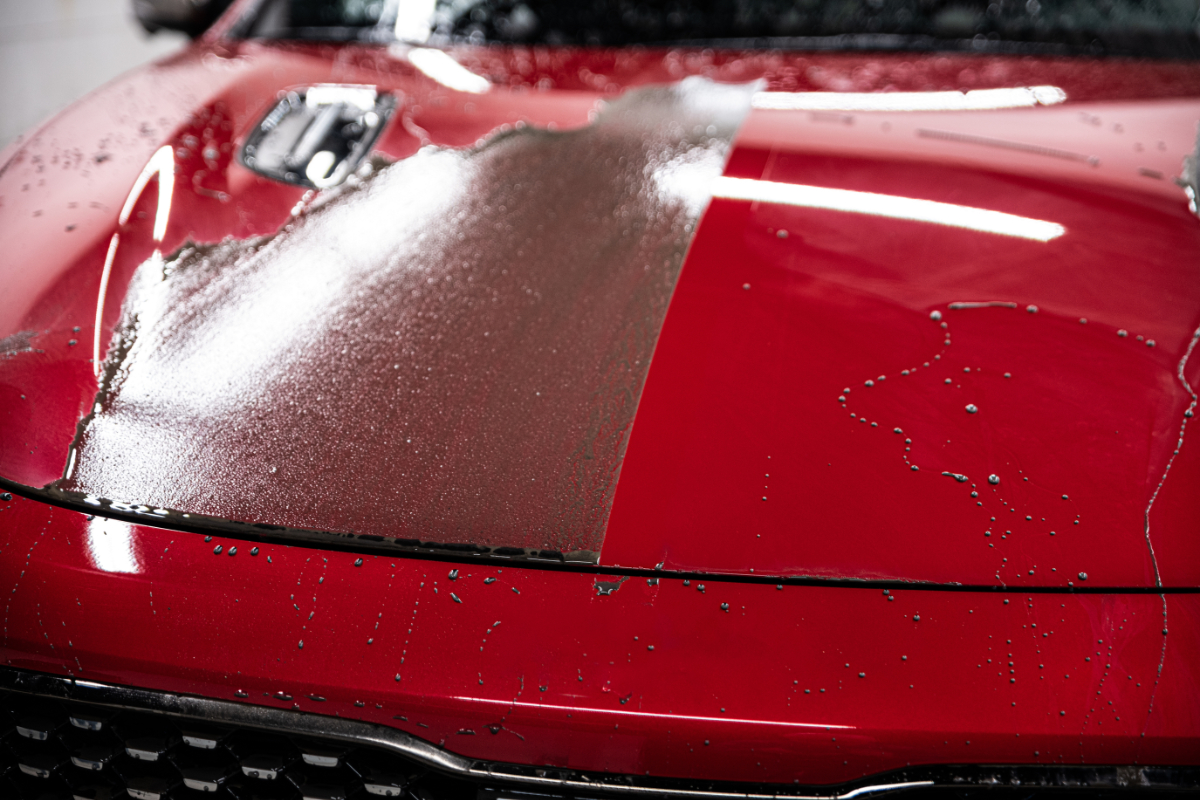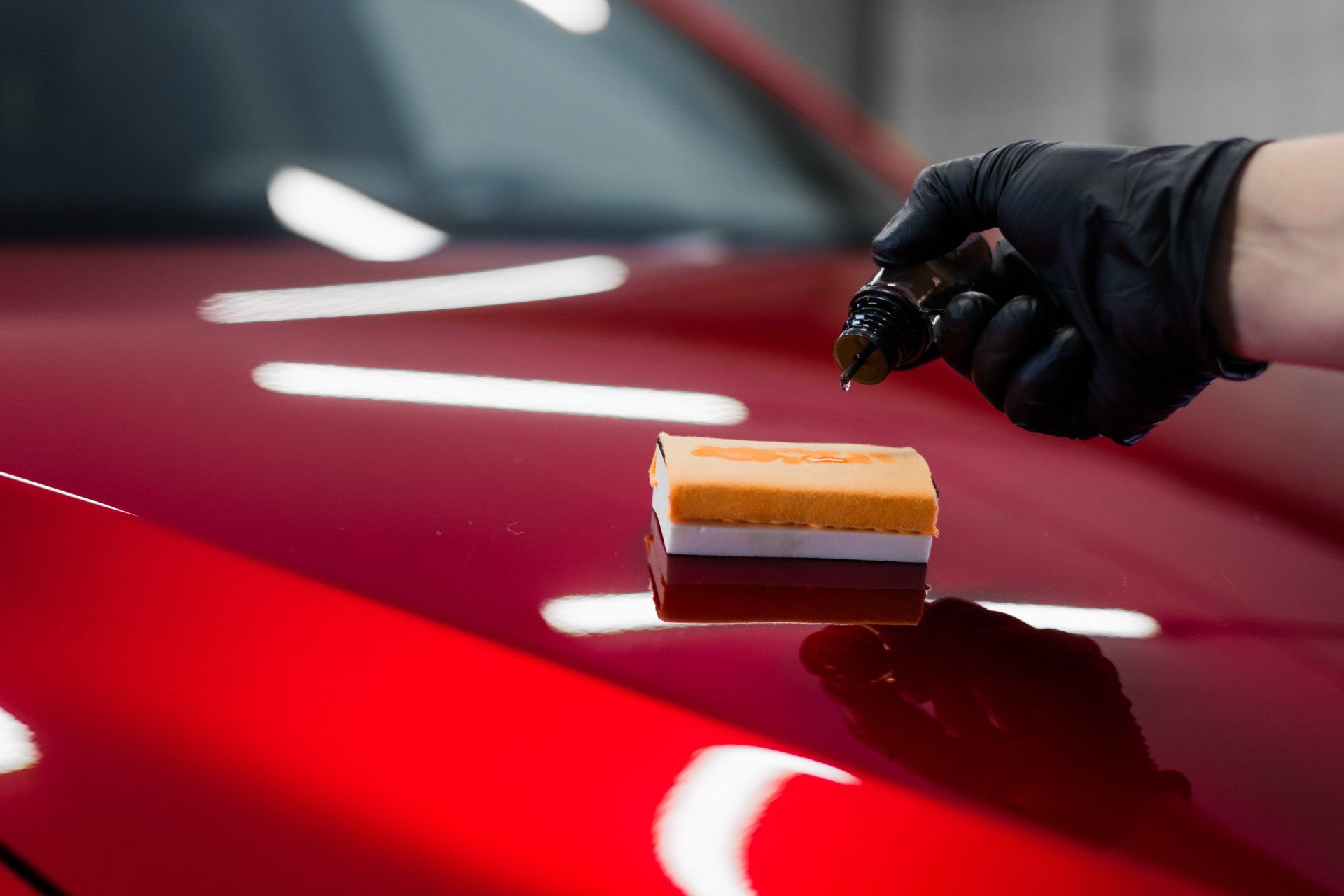The link between Ceramic Coating Newark and easier cleaning
Discovering the Scientific Research Behind Car Ceramic Coating and Its Protective Characteristics
The scientific research of car ceramic coating offers a fascinating research study in sophisticated automobile protection. Composed mainly of silicon dioxide and polymers, these finishes create a durable bond with automobile paint. This communication boosts toughness against environmental risks while providing hydrophobic benefits. Nevertheless, the details of just how these coverings work and their long-lasting advantages stay much less understood. Unpacking these information reveals why ceramic coverings are ending up being a recommended choice for lorry treatment
What Is Ceramic Coating?
Ceramic coating is a liquid polymer that chemically bonds to the surface of a vehicle's paint. This innovative protective layer boosts sturdiness and provides premium resistance to ecological variables. Unlike typical wax or sealers, which provide temporary protection, ceramic coatings create a long-lasting shield that can stand up to severe conditions such as UV rays, acidic impurities, and severe weather condition. When used appropriately, the coating creates a hydrophobic surface area, triggering water to grain and slide off, which helps in maintaining the automobile's sanitation. Additionally, it provides enhanced gloss and deepness to the paint, making the automobile appear even more polished and vivid. The application process normally includes comprehensive surface area prep work, consisting of cleansing and sprucing up, to guarantee peak bonding. Consequently, ceramic layers are ending up being increasingly preferred among car lovers and those seeking to shield their financial investments, assuring to keep the lorry's aesthetic allure while minimizing the regularity of maintenance.
The Composition of Ceramic Coatings
The elaborate solution of ceramic coverings primarily consists of silicon dioxide (SiO2), which is obtained from natural sources like quartz and sand. This essential part provides the foundation for the coating's durability and protective top qualities. Along with SiO2, ceramic finishings often consist of different polymers and additives that enhance bond, versatility, and resistance to environmental aspects. These substances work synergistically to produce a durable obstacle against pollutants such as dust, chemicals, and UV rays.Furthermore, some formulations incorporate titanium dioxide (TiO2) or other nanomaterials, which can augment the coating's hydrophobic residential properties, leading to improved water repellency. The specific structure can differ substantially amongst manufacturers, affecting performance and durability. Eventually, the mix of these aspects culminates in a protective layer that not just improves the visual charm of automobiles yet likewise serves to extend their life-span by securing the surface from prospective damage.
Exactly How Ceramic Coatings Job
Comprehending just how ceramic finishes function entails discovering their chemical composition, which adds to their safety high qualities. The application process is essential for accomplishing excellent results, while long life and resilience elements figure out the coating's effectiveness over time. Together, these aspects highlight the advantages and performance of ceramic coatings for vehicle protection.
Chemical Composition Explained
While numerous car owners look for durable defense for their automobiles, the chemical make-up of ceramic coverings plays a vital duty in their efficiency. These layers primarily include silicon dioxide (SiO2), which is acquired from all-natural minerals. This compound creates a strong bond with the automobile's paint, creating a long lasting, protective layer. Additionally, many ceramic coatings include titanium dioxide (TiO2), improving their hydrophobic residential properties and resistance to UV rays. The visibility of polysiloxanes can better boost versatility and toughness. With each other, these elements contribute to the coating's ability to repel water, dust, and contaminants, while additionally supplying a high-gloss surface. Recognizing this chemical foundation helps car owners appreciate the robust security used by ceramic layers.
Application Process Overview
Applying ceramic coverings involves a careful process that guarantees perfect bonding and protection for the vehicle's surface area. Originally, detailed cleansing and purification of the car's outside are performed to get rid of dust, gunk, and previous waxes. This action verifies that the surface area is without impurities that could impede adhesion. Following Clicking Here this, the paint is frequently polished to enhance clearness and remove any type of flaws. When prepared, the ceramic coating is used in little sections utilizing an applicator pad, enabling consistent protection. The coating is then left to treat, creating a strong chemical bond with the surface. Correct healing times and conditions are important, as they validate the coating accomplishes its optimum efficiency and protective high qualities.
Longevity and Longevity Elements
Ceramic layers are created to offer resilient protection with their sophisticated chemical composition, which creates a durable barrier against ecological pollutants. The resilience of these finishings is influenced by variables such as the thickness of the application, the high quality of the item, and the conditions under which the automobile is revealed. Top notch ceramic layers can last several years, withstanding scratches, UV rays, and chemical spots. Appropriate maintenance, consisting of regular cleaning and regular reapplication, can additionally improve longevity. Furthermore, environmental variables like climate and direct exposure to pollutants can impact the lifespan of the coating. On the whole, when applied and maintained appropriately, ceramic finishes offer remarkable resilience, making them a prominent option for car enthusiasts seeking to protect their vehicle's appearance.
Hydrophobic Residences and Water Repellency
Hydrophobic buildings are a characteristic of high quality car ceramic coatings, substantially improving the automobile's surface area efficiency. These coverings produce a molecular bond with the car's paint, causing a surface area that drives away water properly. When water enters call with a ceramic-coated surface area, it grains up and rolls off, reducing the amount of fluid that stays on the paint. This behavior not only adds to an aesthetically pleasing appearance yet additionally lowers the accumulation of impurities such as dirt, grime, and roadway salts.The boosted water repellency results in easier cleaning and maintenance, as much less initiative is required to eliminate unwanted substances. On top of that, the hydrophobic nature of ceramic finishes helps in avoiding water areas, which can mar the surface of uncoated surfaces. In general, the consolidation of hydrophobic buildings in ceramic coatings plays an essential duty in preserving the automobile's excellent look while streamlining upkeep.
Defense Against Scratches and UV Damages
Car ceramic finishes use significant protection against scratches and UV damage. The scratch resistance system develops a sturdy layer that soaks up impacts, while the UV shielding benefits assist maintain the car's paint honesty over time. Together, these attributes add to a longer-lasting and aesthetically appealing finish.
Scrape Resistance System
Using innovative technology, ceramic layers supply a durable shield against scrapes and UV damages, improving the longevity and look of vehicle surfaces. The scratch resistance device of these layers is credited to their unique molecular structure, which creates a sturdy bond with the car's paint. This bond develops a hard, safety layer that can absorb impacts and resist abrasions. Additionally, the smooth surface of the coating decreases friction, making it tough for pollutants to stick and cause scratches. The chemical make-up of ceramic layers commonly includes nanoparticles that strengthen the safety layer, more boosting its durability. Vehicles treated with ceramic layers show noticeably improved scrape resistance compared to typical wax or sealers, ensuring a pristine surface over time.
UV Shielding Benefits
The safety qualities of ceramic finishes extend beyond scratch resistance to include significant UV shielding benefits. These coverings produce a durable obstacle that mirrors damaging ultraviolet rays, securing the car's paint and underlying materials. Long term exposure to UV radiation can bring about fading, oxidation, and wear and tear of the paint surface. By including ceramic coverings, car owners can effectively reduce these threats, maintaining the aesthetic allure and integrity of their automobiles. hop over to these guys In addition, the UV obstructing residential or commercial properties add to boosted long life, decreasing the regularity of painting and upkeep. Eventually, the assimilation of ceramic finishings uses an extensive remedy for safeguarding cars from the harmful effects of sunlight direct exposure, making sure a continual, lively appearance over time.
The Long life and Maintenance of Ceramic Coatings

Regularly Asked Questions
Can Porcelain Coating Be Applied to Any Type Of Type of Car?
Ceramic coating can be used to numerous sorts of vehicles, consisting of autos, trucks, and bikes. Surface preparation and compatibility with details products are necessary for excellent attachment and efficiency of the coating.
Just How Much Does Ceramic Coating Typically Cost?
Ceramic coating commonly sets you back in between $500 and $2,000, depending on variables such as car size, coating top quality, and specialist application. The investment can supply long-lasting security and enhance the automobile's appearance gradually.

Is Professional Application Necessary for Best Outcomes?
The need of expert application typically depends upon preferred results. Specialists typically assure appropriate surface area prep work and application strategies, resulting in excellent bonding and longevity of the coating, which might be testing for inexperienced people to attain.
Can Porcelain Coatings Be Gotten Rid Of or Fixed?
Ceramic finishings can be gotten rid of or repaired, though the process might need details solvents or methods - Ceramic Coating Newark. Proper removal is necessary to stay clear of damages to the underlying surface, highlighting the value of expert aid for suitable results
Exactly How Does Ceramic Coating Contrast to Conventional Wax?
The contrast in between ceramic coating and conventional wax exposes that ceramic coverings provide exceptional sturdiness, boosted defense against environmental contaminants, and longer-lasting shine, while wax calls for a lot more frequent application and provides much less overall resistance to damage.